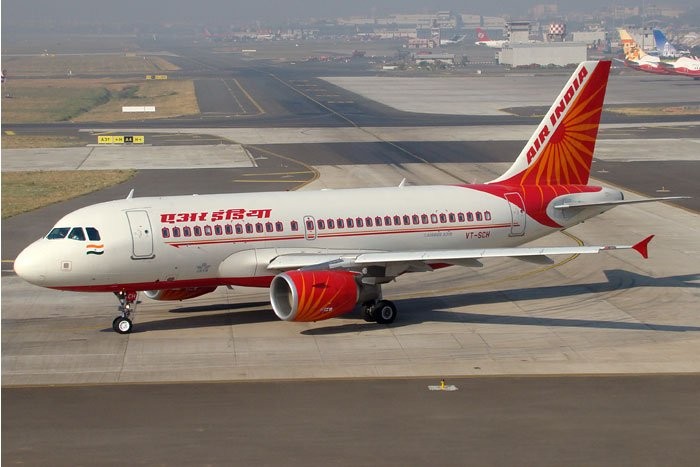
The historic mandate with which the Narendra Modi government has returned should now clear the course for some big ticket economic reforms.
One of the priorities of the new government ought to be a sustained privatisation of public sector units (PSUs) and exiting several businesses where the private sector can prove more effective.
The former NITI Aayog Vice Chairman, Arvind Panagariya, has emphasised the need for such a sustained privatisation push, saying that the government should aim to privatise one PSU each week!
Perhaps divestment of loss-making Air India could help kick start this ambitious disinvestment programme.
There is no plausible reason for the government to continue to be in the business of flying, offering telephone connections or mobile telephony services. Several other untenable businesses also come to mind, but aviation and telecom take precedence in this argument purely because the central public sector enterprises (CPSEs) through which the government operates in these two sectors have been bleeding the most.
Air India accounted for almost a sixth or 17% of losses reported by 339 Central Public Sector Enterprises (CPSEs) in 2017-18. It was the third biggest loss-maker of all, just behind the two telecom CPSEs (BSNL and MTNL). So the first disinvestment decisions of the Modi government in its second avatar should be about Air India. During its first term, the government had tried to divest majority stake in AI but the sale had bombed.
Some of the biggest hurdles which prospective bidders had pointed out then included government insistence on retaining 24% stake, its inability to rid the airline of a huge and insurmountable debt, the size of AI’s workforce and its other liabilities.
In the sale offer, the government had put up 76% stake each of Air India and Air India Express (low cost international arm) and 50% in AISATS for sale. There were hundreds of queries from prospective bidders but not a single bid arrived till the deadline.
A senior Civil Aviation Ministry official had acknowledged earlier this year that the government had erred in insisting on remaining a minority shareholder in the case of AI. This official had also said that the second mistake the government made in AI’s case was leaving so much debt on the airline’s books for any incoming investor, since the latter would have most certainly not been able to service such liabilities through merely operating the airline efficiently.
Meanwhile, the government has formed an SPV (special purpose vehicle) and transferred almost Rs 30,000 crore of the debt on AI’s books to this SPV, leaving it much lighter with just around Rs 25,000 crore of debt. The official quoted above had said even when the debt load on AI had been halved, any prospective bidder may not find the airline attractive since the debt remaining on the books was still too high.
There are indications now that the government may, in its second attempt, offer nearly 100% in AI to bidders and may also tackle more of the remaining debt to make the airline more attractive. It would not be out of place to suggest that the government should consider getting AI off its hands even if it earns nothing from the sale.
Continuing to own the airline merely means pumping funds into it and, therefore, financing its losses. It also needs a more robust sale process to make the PSU more attractive to prospective bidders.
Remember, after the AI sale bombed, the government tried to offload 98% stake in AI’s ground handling arm, Air India Air Transport Service Ltd (AIATSL). But this sale has bombed too, as no bidders came forward till the expiry of the deadline. This, when the bid conditions for AIATSL were more attractive than for the airline.
There were several positives in what the government was offering with AIATSL: For one, AIATSL is a profit-making business unlike AI and its net profit more than doubled year on year in 2017-18. Two, AIATSL is a strong player in India’s fast growing ground handling market unlike the airline, which has lagged private peers. Three, nine in 10 employees of AIATSL are contract workers and therefore less of a burden for investors compared to AI. Four, the bid document said AIATSL did not have any “significant” contingent liabilities as of March 31, 2018.
Why bidders have shunned both, AI and AIATSL despite different conditions and profitability criteria needs to be examined in detail. It would perhaps be prudent for the government to sell off at least the airline for a princely sum of one rupee.
That AI is a loss-making white elephant and a drag on the taxpayers is no secret. The airline’s latest annual report shows that it had accumulated losses of Rs 53,583.92 crore as of March 31, 2018. To put this number in context, suffice it to say that Air India’s accumulated losses were a tad above India’s entire health budget for that year!
The airline has never made a net profit since the two erstwhile airlines, Air India and Indian Airlines, merged to form the current entity in 2007. So the mountain of accumulated losses has been created over the last decade, with the net loss for 2017-18 coming in at Rs 5348.7 crore. This means an average daily loss of just under Rs 15 crore was posted by Air India in 2017-18. And the independent auditors who have audited the airline’s financials for 2017-18 have said in their notes in the latest Annual Report that “loss has been understated by Rs 338.7 crore”.
The auditors have also said that Air India’s current liabilities exceed its current assets by Rs 38,161.37 crore and together with the accumulated losses, there has been complete net worth erosion of the company. Besides the parent airline, three of Air India’s five subsidiaries also posted losses during the year.


.jpeg)

